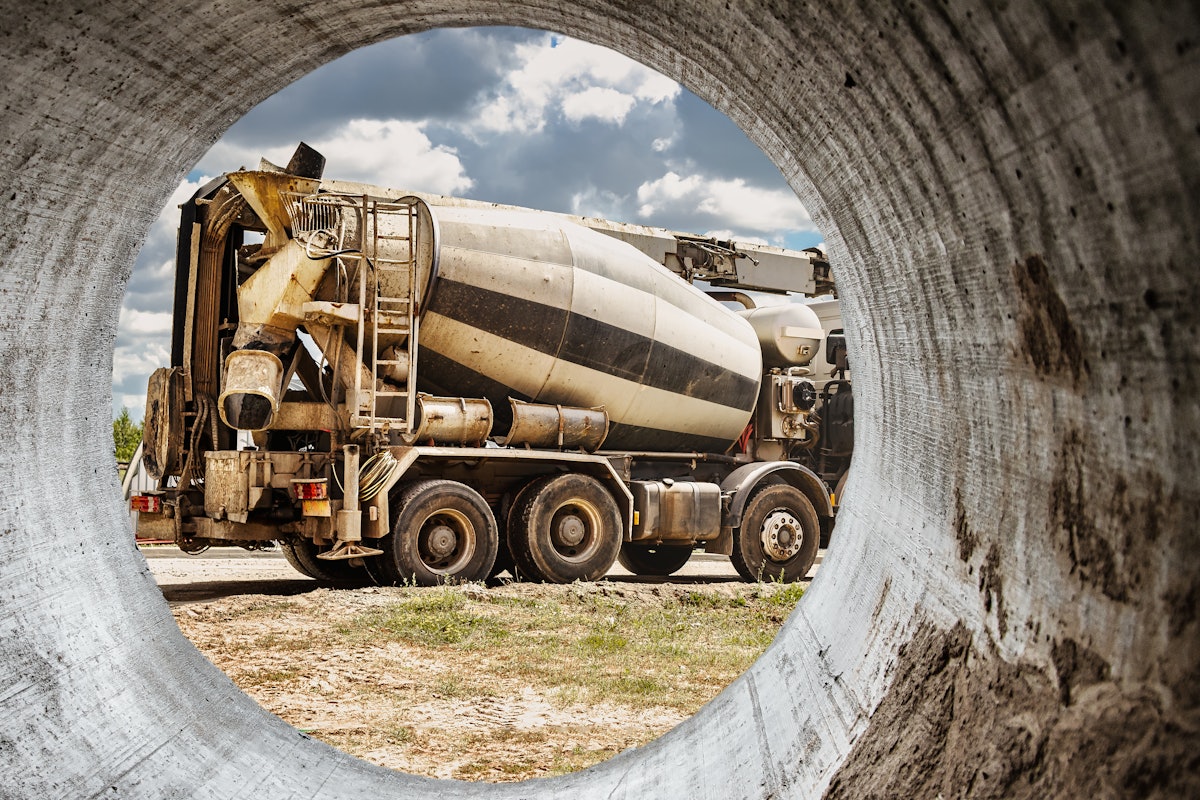Predictive maintenance is rapidly transforming the landscape of fleet management across the construction industry. In the concrete industry specifically, where uptime, reliability, and efficiency are crucial, implementing a predictive maintenance strategy can provide substantial benefits. Predictive maintenance leverages data and technology to anticipate when equipment or machinery are in need of servicing. This approach is especially valuable for concrete operations, where a fleet of trucks is often under heavy and continuous use, carrying critical loads on tight schedules.
Here are six ways predictive maintenance can positively impact the daily operations of a concrete business, enhancing operational efficiency, safety, cost savings, and customer satisfaction.
Enhanced Operational Efficiency
Predictive maintenance relies on data from sensors and telematics devices installed on concrete trucks, which track metrics such as engine temperature, oil pressure, tire pressure, and other essential parameters. By monitoring these in real time, fleet managers gain insights into the truck’s operational health, allowing them to schedule maintenance proactively instead of reacting to breakdowns.
In concrete operations, downtime directly translates to lost revenue and productivity. Concrete mixers need to maintain a specific schedule to transport and deliver concrete on time. Unlike other delivery goods, concrete must be used within a set timeframe to ensure optimal quality, so any breakdown or delay can result in wasted loads. Predictive maintenance minimizes unplanned downtime by allowing fleet managers to address potential issues before they become critical, ensuring trucks remain in operation when needed and concrete arrives fresh and on time.
Reduced Maintenance Costs
A significant advantage of predictive maintenance is its cost-saving potential. Traditionally, maintenance is either preventive or reactive. Preventive maintenance involves servicing trucks on a set schedule, but many times there are multiple issues occurring on a truck that are not known prior to servicing, leading to extended repair and downtimes. Reactive maintenance, on the other hand, addresses issues after a breakdown, often resulting in expensive repairs and lost productivity.
Predictive maintenance strikes a balance by using data to predict when a part is likely to fail, but also surfacing issues commonly overlooked due to the fast-paced environment these vehicles and technicians operate in. This means only replacing parts when necessary, thus avoiding premature wear and extending the lifespan of components. Over time, predictive maintenance reduces overall maintenance costs by preventing major breakdowns, lowering the frequency of repeat shop visits, and optimizing labor costs associated with repairs.
Extended Lifespan and Higher Asset Utilization
Concrete mixers and pumps represent a substantial investment for any operation, and maximizing their lifespan is critical for ensuring a good return on investment. Predictive maintenance can extend the operational life of concrete trucks by preventing excessive wear and tear on engines, transmissions, and other critical components. When trucks are maintained only as needed, based on actual usage and real-time conditions, they experience less downtime, endure fewer breakdowns, and remain on the road longer.
Additionally, predictive maintenance enables better asset utilization by allowing fleet and construction managers to maintain a consistent and efficient rotation of trucks. By keeping more vehicles operational, operations can meet demand fluctuations more effectively without having to maintain an additional pool of trucks to cover potential downtime, reducing overall costs.
Increased Customer Satisfaction and Reliability
Reliability is a core component of customer satisfaction for any industry. Construction projects are typically on strict deadlines, and a delayed concrete delivery can set back an entire project, causing cost overtures and frustration. By minimizing breakdowns and ensuring that concrete trucks are in optimal condition, predictive maintenance helps ensure that deliveries are timely and reliable.
Predictive maintenance can also create trust. Knowing that a company’s fleet is well-maintained and less likely to experience disruptions can provide clients with confidence in the company’s service. As companies build a reputation for reliability, they can benefit from repeat business and positive word-of-mouth referrals, further boosting their market position.
Optimized Inventory and Part Management
One often-overlooked benefit of predictive maintenance is its impact on inventory management. Traditionally, companies may stockpile parts to be prepared for unexpected breakdowns. However, holding a large inventory of parts can tie up budgets and take up valuable shop space. Predictive maintenance, on the other hand, allows companies to predict specific part needs based on real-time data.
For example, if a particular batch truck shows trends of issues related to diesel particulate filter replacements, a fleet manager can order replacements in advance, ensuring they are on hand precisely when needed. This approach not only optimizes inventory costs but also ensures that critical parts are readily available, reducing the lead time for repairs.
Sustainability Impact
In today’s world, companies are increasingly expected to adopt sustainable practices. Predictive maintenance aligns with these goals by reducing unnecessary maintenance activities. A well-maintained truck operates more efficiently, consuming less fuel and emitting fewer pollutants.
Trucks that experience fewer breakdowns also spend less time idling during repairs, further reducing their environmental footprint and cutting fuel costs. By optimizing maintenance, a concrete company can contribute to sustainability goals, reduce its environmental impact, and potentially attract environmentally conscious clients.
Predictive maintenance offers transformative benefits, particularly in the management of concrete trucks. By shifting from reactive and preventive maintenance to predictive strategies, concrete companies can achieve greater operational efficiency, cost savings, and improved safety. This approach not only extends the life of valuable assets but also enhances customer satisfaction by ensuring timely and reliable deliveries. Furthermore, predictive maintenance supports sustainability goals, making it a valuable asset for companies looking to reduce their overall maintenance spend. As technology continues to advance, predictive maintenance will likely become an essential part of fleet management in the construction industry, helping concrete businesses and contractors stay competitive in a demanding and fast-paced market.
View the original article and our Inspiration here


Leave a Reply